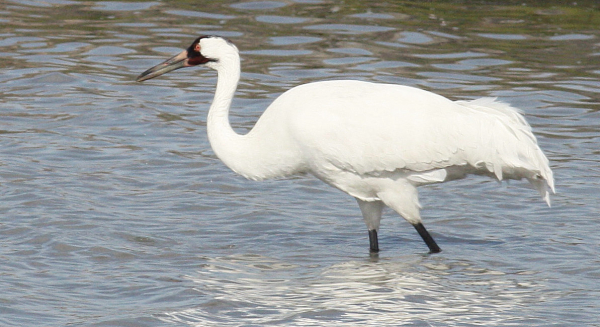
Because Whooping Cranes are one of the rarest birds the world, a second migratory population that nests in Wisconsin has been established.
|
Recovery of the Eastern Migratory Population of Whooping Cranes continues to gain momentum as spring nesting winds down after at least 21 pairs nested in Wisconsin this spring. The current estimated Eastern Migratory Population size is 83, which includes 40 females, 40 males, 3 Whoopers of unknown sex to date. To the best of biologists’ knowledge, at least 75 Whooping Cranes are in Wisconsin, 4 are in Michigan, and 1 is in Illinois, while three other Whoopers’ locations have not been confirmed during the past month.
Of the 83 Whooping Cranes in this reintroduced Eastern Migratory Population, 14 were wild raised by nesting pairs, showing a significant level of success among the reintroduced population. The other 69 Whoopers in the wild population were captive-reared and reintroduced to the wild as part of the Eastern recovery project.
The above population totals do not include this year’s newly hatched Whoopers, but biologists have ascertained that at least 21 pairs nested in Wisconsin this spring and at least 14 eggs hatched. One of the problems with North America’s Whooping Cranes is that they reproduce very slowly.
The primary Whooping Crane population nests in Wood Buffalo National Park and the surrounding area in Canada, where Northwest Territories meets the northeast border of Alberta. This population that numbers about 500 Whooping Cranes migrates south through the Great Plains to wintering range centered at Aransas National Wildlife Refuge on the Gulf Coast of Texas.
The monumental bird conservation project to reintroduce the Eastern Migratory Population of Whooping Cranes has been led by the International Crane Foundation, the US Fish and Wildlife Service, and state departments of natural resources from states along the migration route of this reintroduced population of Whooping Cranes. For more information about the Eastern Migratory Population of Whooping Cranes and the work being conducted by the International Crane Foundation around the world, see https://www.savingcranes.org/whooping-crane-eastern-population-update-june-2020/